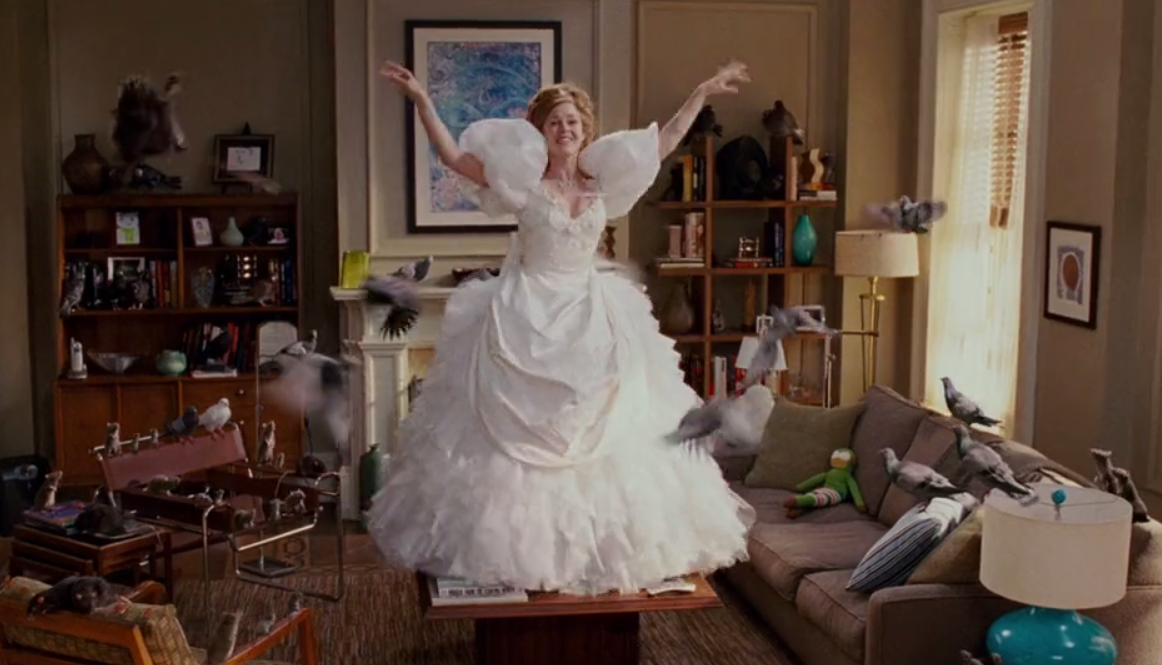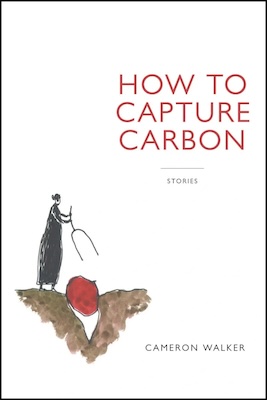In the fantasy books I read as a child, the hero was often unassuming, misunderstood, flustered, out of sync with the world. But then she’d learn the truth: she was actually a wizard. Or she could speak to animals. Or she could zoom between centuries, or cover unfathomable distances on the wings she never knew she had. As a child, I knew it could happen to me, too, if I was patient. Until then, I would keep reading.
But as l grew older, and particularly after I became a parent, magical worlds gave way to the daily grind. With three young kids, this life started feeling even more circumscribed—particularly during the pandemic. No one was coming to tell me that I had unexpected powers, and however much I wished it, I would not be swept away into another dimension where life made more sense.
As a reader and as a writer, my focus shifted: I wanted stories that dabbled in small magic while still tethered to the life I knew—one with dishes piling in the sink and laundry to fold and people to care for and care about. In How to Capture Carbon, my new short story collection, I wanted to understand how people’s everyday lives might unfold if brushed by the fantastic, to see how this dusting of enchantment would transform characters and their worlds, making life at once strange and more understandable. From a story of a mother unraveling when her whole family’s shoes go curiously missing, to another of a woman whose pie crusts become life rafts following a natural disaster, the stories in my collection use the domestic as a foundation and then blossom outward into the surreal.
You might call it Kitchen Surrealism, or perhaps Domestic Fantastic for the charming consonance. Stories of this type can interweave fairytale with fixing a broken faucet, or find the uncanny in untangling the box of charger cords (one of my least favorite tasks), or tell a ghost story in which the haunting is less about horror and more of a way to understand the world of the living. In the Domestic Fantastic, leaps into strangeness create a mirror in which to better glimpse the reality of domestic life. In each of the books below, the authors illuminate that magic that already exists in the mundane, if only I look close enough to see it.
The Shame by Makenna Goodman
Alma, the mother in Makenna Goodman’s slim, propulsive novel is driving through the darkness, on the way to leave her life behind. “I put my water bottle down onto cough drop wrappers in the cup holder and saw a half-sucked one stuck to the console. Next to it was a crust of stale bread and some broken baby sunglasses, like bird skeletons.” It’s a life measured by the daily duties of caring for her children and her family’s Vermont homestead—tapping maple trees, shopping on eBay, endless cycles of taking winter clothes off and putting them on again. But each small moment telescopes into the surreal as Alma imagines the other lives she could be leading and also fantasizes about a potter, Celeste, who she’s seen on social media—a woman who first inspires Alma’s writing and then becomes an obsession.
A Ghost in the Throat by Doireann Ní Ghríofa
In A Ghost in the Throat, Irish poet and essayist Doireann Ní Ghríofa writes about her obsession with the life of 18th-century Irish noblewoman Eibhlín Dubh Ní Chonaill, whose famous lament poem, or caoineadh, the author first heard in school. Now a mother herself, Ní Ghríofa‘s immersion into the life of a woman who lived centuries ago runs alongside her lists of chores and notes about expressing milk for her newborn daughter in the NICU. “This is a female text borne of guilt and desire, stitched to the soundtrack of cartoon nursery rhymes,” she writes. This book brings together the pieces of these two lives into a quilt that shows how these small moments echo through the centuries, and how the ghosts of the past are stitched the present.
Lost and Wanted by Nell Freudenberger
Theoretical physicist Helen Clapp knows how to unravel the unknowns of the universe and how to explain black holes and quantum cosmology to the general public. But when other mysteries appear in her life—after an old friend, Charlie, dies, Helen keeps receiving her texts, and Helen’s young son says he’s seen Charlie’s ghost–she must find a new way to respond. The interweaving of the secrets of the universe and the dark matter that is domestic life makes this book hum with atomic energy, particularly at its conclusion, where some questions are answered and other mysteries remain, haunted by the most challenging solution: love.
The Blue Jay’s Dance by Louise Erdrich
The cover of my copy of Louise Erdrich’s The Blue Jay’s Dance reads “A Memoir of Early Motherhood”—but on the inside, the book’s subtitle is “A Birth Year.” The latter seems to reflect the transformation that Erdrich records not only in her own life with her family, but in the natural world around her. “Simultaneously with the birth of each baby, as if the obstacle of close confinement makes me aware of greater freedoms in the woods, the impulse to get outside hits me, strengthens, becomes again a habit of thought, a reason for storytelling, an uneasy impatience with walls and roads.” The magic here is in the steadiness of Erdrich’s attention: on the “magnetic ocean” of the wind, on the real and imaginary gardens that she plants, on the wilderness inside and out, including that of her growing children.
Housekeeping by Marilynne Robinson
“Ordinary things have always seemed numinous to me,” Marilynne Robinson said in an interview with the Paris Review. In her first novel, Housekeeping, the numinous shines through the ironing, tidying, sewing, and scrubbing that several generations of a family of women do to hold on to their home and to each other after a series of losses in the town of Fingerbone. The rhythm of daily tasks feels like a charm that two sisters, Ruth and Lucille, use to ward off further disaster, and run counterpoint to Ruth’s growing connection to the more dream-like world of her unusual aunt. For me, the novel is less about whether the choice to lean into routine or into the unknown is the right one, but about the courage to continue living, day by day.
The Woman Warrior by Maxine Hong Kingston
“‘You must not tell anyone,’ my mother said, ‘what I am about to tell you.’” This memoir starts urgently, with a secret, and with other stories that shape Hong Kingston’s understanding of her family’s past and her experience of growing up Chinese American in California in the 1940s and 1950s. The stories her mother tells her take her deep into Guangdong province and also into the territory of ghosts and mythic figures, like Fa Mu Lan, who leaps walls and defeats giants. While the narrator travels freely through time and space, from the real to the magical and back again, the stories always feel located in small moments. They are told from kitchens and laundries and overturned orange crates, while starching collars and at bedtime. They are stories from home, of home, that ultimately help Hong Kingston find her own voice.
Gingerbread by Helen Oyeyemi
The kitchen is the epicenter of the surreal in this 2019 novel, one of many of Oyeyemi’s that looks at the world and turns it appealingly (and often, hilariously) askew. Here, Harriet Lee’s home-baked gingerbread is not a benign, saccharine confection. It’s laced with strange magic, and which Harriet applies to a particularly fraught domestic experience—the parent-teacher association (or, as it’s called in Gingerbread, the Parental Power Association). Unusual events and revelations ensue: Harriet’s daughter falls seriously ill after making her own gingerbread—or she might just be traveling to Harriet’s possibly fictional home country of Druhástrana. Oyeyemi starts with a biscuit tin and lets the contents ripple outward into the fantastic, showing how much can come from butter, flour, and a little sweetness.
Wild Milk by Sabrina Orah Mark
This beautifully uncanny story collection is filled with mothers, fathers, stepmothers, brothers and grandmothers, all of them doing ordinary things against a backdrop of the increasingly surreal. In one story, the narrator’s mother calls from the dentist every day—for ten years. “’I really wish you would get married already,’ she sighs. She sounds like her mouth is slowly filling up with mice.” In another, a mother who works to remove lice from other children’s heads finds that her own sons have turned into gigantic daughters with lice densely populating first their hair, then their knees, as rainwater slowly floods their house. These stories themselves create a slow flood of strangeness that helped me to see both the bizarre and the beautiful in domestic life.
Read the original article here

